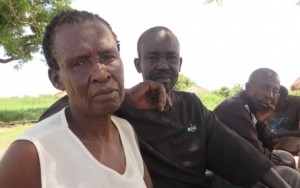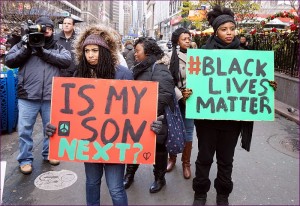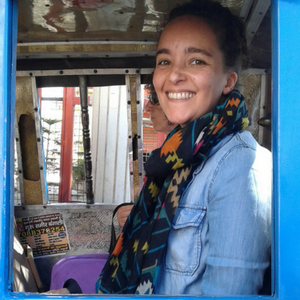Earlier this week, Forbes published it’s 2015 list of the world’s most powerful women—”most powerful” as defined, of course, by Forbes. The magazine’s criteria:
This is FORBES’ definitive annual audit of the foremost heads of state, iconic entrepreneurs and CEOS, celebrity role models, billionaire activists, and pioneer philanthropists, all ranked by money, media momentum, spheres of influence and impact (full methodology here).
These narrow criteria lead to a narrow understanding of power. While the 100 women on the list, from Angela Merkel (“No. 1”) to Lee Boo-Jin (“No. 100”), undoubtedly achieved much material success, what about criteria that highlight a person’s inner power? I’ve just finished reading Thich Nhat Hanh’s The Art of Power, which offers much deeper food for thought:
…[A]ll the power you possess, no matter how great, is useless if it does not bring you joy and does not bring peace and happiness to those you love.
…There is only one kind of success that really matters: the success of transforming ourselves, of transforming our afflictions, fear, and anger. This is the kind of success, the kind of power, that will benefit us and others without causing any damage.
…Without compassion, you can’t be happy, no matter how rich you are.
Are the leaders of states, financial institutions, and oil companies on Forbes‘ list joyful? Does their power expand peace and happiness? Does their power deliver a truly shared prosperity for all?
We can’t really expect Forbes to use criteria of inner-power or compassion. Forbes exists to celebrate material wealth, no matter how artificially or exploitatively that wealth may have been created. Forbes’ material-glorifying purpose is so well known that the company website doesn’t even need to feature an “About” or “Mission” page.
What would a list of the world’s most powerful women from a person-power standpoint look like? Well, I’m not sure there could even be a list. Each and every person on the planet, of whatever gender identity, is powerful, whether we’ve fully developed that understanding within ourselves fully or not. And our inner powers are not necessarily visible. They may show through our work, but many of us work quietly, far from the public spotlight.
Plus, as Gloria Steinem has said, “Humans are linked, not ranked.” So how would we possibly decide who has “the most” person power? I don’t believe we’d be interested in turning inner power into some kind of “I’m the best” competition. And could we really reduce “the most” powerful to just 100 people? One individual’s person power is to the benefit of all. One person’s inner wealth is part and parcel of humanity’s collective power.
Yet it’s still thought-provoking to consider a power list based on inner power. To make a start in that direction, I’ve highlighted some women below who are taking bold actions and inspiring people everywhere. These women are not “self-made” in the same way that Forbes thinks of “self-made.” Rather, these women are self-made in the sense that they’ve pushed through whatever fears, doubts, and hopelessness they may have felt in trying circumstances to create change or build constructive alternatives.
Beyond that, no single person is really self-made. We are all part of a social fabric, with familial, educational, cultural and other environments that have shaped who we are and influence who we become. So I’ve included both individuals and groups (which include people of any gender identity) in my starting list. I don’t rank anyone in any special order. Just by names, alphabetically.
 Keromela Anek and all the other elder women in Uganda working to protect public lands and keep their communities intact: when an investor from South Africa set his eyes on a remote and densely forested area in Uganda—and when Ugandan officials planned to redistrict her community’s village to facilitate a land deal for the investor—Anek, whose 29 year-old son had been previously murdered by government lackeys as a scare tactic, blocked a Ugandan government convoy from reaching her village. She succeeded by flailing around in the road, naked. And when the country’s dictatorial president visited a neighboring village to demand that residents surrender their land to a corporation, the elder women there disrupted his speech by shedding their clothes. These protests sparked an integrated movement that includes nonviolent trainings. Learn more about Anek and the land-protecting actions taken by other Ugandan women. Photo courtesy of Waging Nonviolence.
Keromela Anek and all the other elder women in Uganda working to protect public lands and keep their communities intact: when an investor from South Africa set his eyes on a remote and densely forested area in Uganda—and when Ugandan officials planned to redistrict her community’s village to facilitate a land deal for the investor—Anek, whose 29 year-old son had been previously murdered by government lackeys as a scare tactic, blocked a Ugandan government convoy from reaching her village. She succeeded by flailing around in the road, naked. And when the country’s dictatorial president visited a neighboring village to demand that residents surrender their land to a corporation, the elder women there disrupted his speech by shedding their clothes. These protests sparked an integrated movement that includes nonviolent trainings. Learn more about Anek and the land-protecting actions taken by other Ugandan women. Photo courtesy of Waging Nonviolence.
Robi Damelin and all the Israeli and Palestinian parents striving for reconciliation and peace between their countries: “You may not kill anyone in the name of my son,” Damelin told the Israeli officers who showed up at her door after her son was killed by a Palestinian sniper. She is the director of the Women’s Group for the Parents Circle Families Forum, a grassroots organization comprising hundreds of Palestinian and Israeli parents who’ve lost children in the fighting and who are working together to advance reconciliation. For her work, Damelin was named a 2014 PeaceMaker at the Joan B. Kroc School of Peace Studies at the University of San Diego. Read more about her story and get a glimpse of her journey in forgiving the man who killed her son.
 Alicia Garza, Patrisse Cullors, Opal Tometi, and all who participate in #BlackLivesMatter: Garza has worked against systemic racism for years, as a community organizer. Following the acquittal of George Zimmerman for the death of Trayvon Martin, Garza, along with friends Cullors and Tometi, launched #BlackLivesMatter to inspire deeper discussions about racism. Black Lives Matter quickly grew from a hashtag into a social media phenomenon and an entire movement. Garza is Special Projects Director at National Domestic Workers Alliance, and she has been rewarded several times for her community organizing work. Cullors, an LA-based artist and activist, is co-founder of Dignity and Power Now, which advocates for prison reforms. Tometi, who immigrated to the U.S. from Nigeria in the early 1980s, serves as the executive director at Black Alliance for Just Immigration.
Alicia Garza, Patrisse Cullors, Opal Tometi, and all who participate in #BlackLivesMatter: Garza has worked against systemic racism for years, as a community organizer. Following the acquittal of George Zimmerman for the death of Trayvon Martin, Garza, along with friends Cullors and Tometi, launched #BlackLivesMatter to inspire deeper discussions about racism. Black Lives Matter quickly grew from a hashtag into a social media phenomenon and an entire movement. Garza is Special Projects Director at National Domestic Workers Alliance, and she has been rewarded several times for her community organizing work. Cullors, an LA-based artist and activist, is co-founder of Dignity and Power Now, which advocates for prison reforms. Tometi, who immigrated to the U.S. from Nigeria in the early 1980s, serves as the executive director at Black Alliance for Just Immigration.
Amandine Roche and all the Afhgans striving to heal their war-inflicted traumas: a writer, human rights worker, and yoga teacher, Roche is the founder of the Amanuddin Foundation, a Kabul-based nonprofit that offers mind-body healing programs as a humanitarian service. The Amanuddin Foundation also promotes peace and nonviolence education for students and adults in Afghanistan. Roche amazed Peace Paradigm Radio listeners (not to mention the Metta Center staff) with her gripping stories about meeting with the Taliban and disarming and rehumanizing a suicide bomber—with nothing more than a smile. Hear her tell her story on Peace Paradigm Radio.
Malala Yousafzai and all the girls in Pakistan who believe in their human dignity and their right to education: at 16, Yousafzai was the youngest person to be nominated for the Nobel Peace Prize (she went on to share that prize with Kailash Satyarthi). At the age of 11, she had already been working for girls’ education rights in Pakistan. Her passionate efforts raised the ire of the Taliban, leading to a life-threatening attack by the Taliban in 2012. She continues to be a bold voice for peace and girls’ rights. Her incredible personal story is illustrated in her memoir, I am Malala: The Girl Who Stood Up for Education and Was Shot by the Taliban. Her appearance on The Daily Show was just as inspiring as her Nobel acceptance speech.
Who would you like to see on a World’s Most Person-Powerful Women list? Add your thoughts to the comments below.








